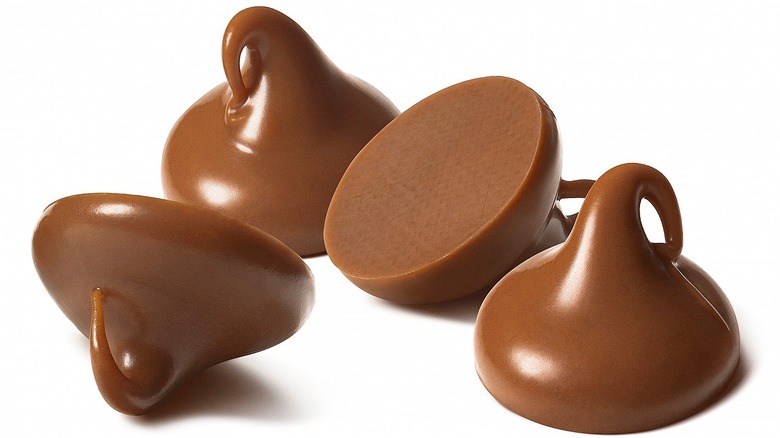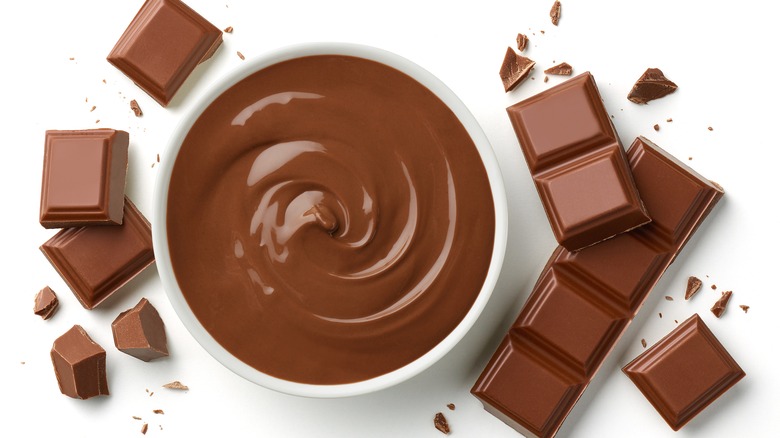Why Chocolate Chips Are Basically Ruining Your Desserts
Did you know some people don't like chocolate? While avoiding chocolate has its merits, especially in regard to the waistline, you miss so many delicious desserts and candies in your life. Still, would you consider not craving chocolate chip cookies, chocolate ice cream, or chocolate cake a curse, or is it a blessing in disguise?
According to the Daily Mail, hating chocolate is an American problem. American chocolate manufacturers like Hershey's reportedly add an emulsifier called PGPR and put the confection through lipolysis, which chocolatiers across the pond do not. Lipolysis breaks down the fatty acids in chocolate and produces butyric acid, which, along with PGPR, creates a "vomit" taste and smell for a small few.
Forbes claims the rest of us consume nine-and-a-half pounds of chocolate each year, rewarding the Willy Wonkas out there with $21.1 billion in sales in 2021, up 9.2% according to the National Confectioners Association. Supermarket shelves offer many options to get your fix on, selling chocolate bars and nostalgic chocolate chips in varying percentages of cocoa, milk, and dark chocolate for all your baking needs. While some recipes specify what percentage of cocoa to use, it can be overwhelming to pick the right chocolate, especially when some options are pricy. It is tempting to pick a single type of chocolate and use it for all your chocolate recipes, from pot de creme to the uber-popular hot cocoa bombs, but experts warn that shortcut may be ruining your baking.
Chocolate chips contain thickeners
Whether making bonbons or chocolate-covered strawberries, chocolate-making begins by tempering the chocolate. Tempering requires melting, cooling, and melting the chocolate again, a lengthy process that results in a glossy shell on the chocolate that doesn't melt immediately and 'snaps' when you bite into it. Skipping this step can produce dull-looking chocolate confections with white blooms and a waxy taste which, unlike M&Ms, will melt in your hands (via Alton Brown).
Holidays like Halloween, Christmas, and Easter can turn home bakers into novice chocolatiers, trying their hands at making truffles, bark, and chocolate lollipops. Using the same chocolate chips you just added to those delicious cookies may seem like a good idea, certainly the most convenient, but pastry chef Maya Hayes from Ocean House Collection says not to (Food & Wine). To maintain the iconic shape of a chocolate chip while it's baking, manufacturers add thickeners like soy lecithin so chocolate chips appear not to melt. Chips have a small percentage of cocoa, usually 25%-30%, and can contain vegetable oil which turns "thick, muddy and grainy" when melted, making it a poor choice for tempering (via Joy of Baking)
The Joy of Baking adds chocolate chips are meant for cookies, muffins, and other baked goods where you want the texture and look of a chocolate chip. Recipes that require melted chocolate should use a higher quality of chocolate. Hayes recommends using 'bars, chunks, or callets' when melting chocolate and saving the chocolate chips for brownies.

